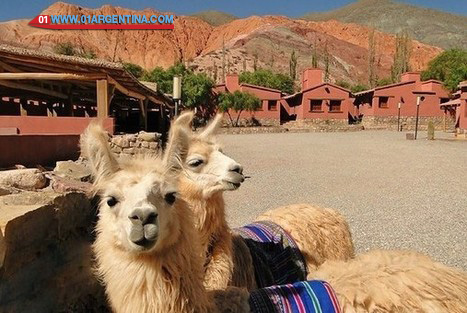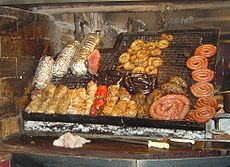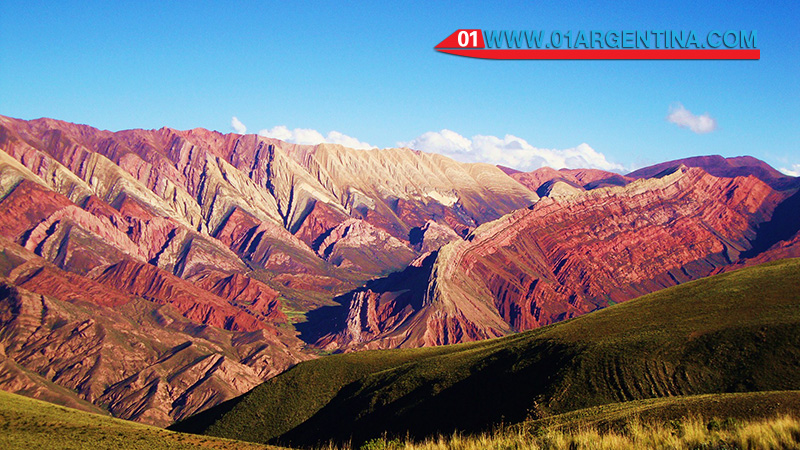The name of this beautiful province in northern Argentina owes its origin to the Aymara dialect word, Sagta, which means “very beautiful.” In addition to the charming and quiet city of Salta, the cities of Cafayate and Cachi stand out.
At a geographical level, Salta is located south of Jujuy and has a border that it shares with Bolivia. It also borders Formosa, Catamarca, Tucumán, Chaco and Santiago del Estero. The most important cities of Salta are: Tartagal, Orán, Salta, Cachi and Cafayate.
The province of Salta is famous for the spectacular scenery formed by the Andean peaks, the reddish rock valleys and vineyards. All these cities can be visited with a personalized travel package to the Argentine Northwest.

Places to visit in Salta
Just outside of San Lorenzo, an affluent suburban town about 10 km from the city of Salta, the Quebrada de San Lorenzo nature reserve lies at the foot of the sub-Andean mountains. It conserves a section of the fragile environment called the Yungas forest, which is located on the eastern side of the Andes. Book an excursion with the local Salta travel agency or hike uphill and soak up green ferns, streams, mosses, and the colorful wildlife of a tropical cloud forest. Along the way, you may run into farmers, descendants of the ancient Incas, who rode on horseback from their homes in the hills. You will also see lots of wildlife, including foxes, small deer called corzuelas, and birds, including hawks and toucans.
The city of Salta is a colonial city, very quiet and charming. Its historical places are worth knowing.
Cabildo of Salta
Church of san francisco
Monument to Martín Miguel de Güemes – Salta
La Polvorilla Viaduct
Los Cardones National Park
Quebrada de las Conchas – Cafayate
Quebrada de las Flechas
El Rey National Park
Salta gastronomy

In Salta you can enjoy very solid native food, famous and studied by the most renowned chefs. Some typical vegetables of Salta are: potatoes in their forties or from the hill, beans, capia corn, broad beans, goat cheese, quinoa, weeds for different uses,
As for fruits, they are typical and organic, pears and apples from the hills and homemade sweets.
The typical dishes of Salta cuisine are:
Humita in Chala
Tamales
Picante de Panza salteño (tripe stewed in spicy sauce, potatoes)
Empanadas Salteñas. They are generally requested as an entrance, in Salta cuisine and their main characteristic is their simplicity.
Locro from Salta
Llama meat. Soft and lean, with a sweet aftertaste.
Quesillo with cayote and walnut sweet
Kid casserole
Gaznates: they are fried rolls filled with dulce de leche.
With a particular climate, dry and sunny, it allows not only to cultivate vineyards, it also produces hot peppers, fresh cheeses and cheeses, a variety of vegetables and good jerky.
Salta capital

Founded in 1582 by the Spanish Hernando de Lerma and therefore its architecture still retains the neoclassical characteristics. The ancient city is a jewel to visit on foot. The capital of the province of Salta, the city of Salta is located in the north of the province, within the Lerma Valley at 1152 meters above sea level. Visitors to this city is the destination to visit the Calchaquí Valleys.
What to see in Salta city
A view of the city and the nearby valleys can be obtained from Cerro San Bernardo (Avenida Uruguay and Paseo Güemes) the natural viewpoint to the east of the city center. You can climb the more than 1,000 steps to the top from the path behind the equestrian statue of General Martín Miguel de Güemes, who led the Salta rebels in the Argentine War for Independence. Along the way, admire the low scrub, more than a dozen shrines, and local residents running for exercise. If the climb seems daunting, there is an easier way. A cable car ride from Parque San Martín leads to the same panorama.
Admire the peaceful atmosphere of the city as you wake up strolling through some of its picturesque churches. Start with the neoclassical Cathedral Basilica of Salta in Plaza 9 de Julio. Then walk to the San Bernardo Convent (Caseros 73) to admire the attractive carved door, an example of indigenous art. Finish off with Iglesia San Francisco (Córdoba 33), which has an earth-red facade and claims its 170-foot bell tower is the tallest in South America.
In the city of Salta you can also see El Cabildo, the Monument to Güemes, the Monument to the Battle of Salta, the High Mountain Museum, the Cathedral where the image of the Lord and the Virgin of the Miracle (patrons of Salta ), being venerated by thousands of faithful every September 15, the day that the Fiesta and Patronal Procession takes place, the nightlife of the city, surrounds Balderrama street, where there are several Folkloric Peñas.
The tree-lined Plaza 9 de Julio is the main square and the heartbeat of Salta. When night falls, the square and the streets around it are full of life and the people of Salta gather in cafes and bars to relax. A popular spot is the Argentine-Italian delicatessen Casa Moderna (Spain 674; 0387-422-0066) which despite its name was first opened in the early 20th century.
At the Quebrada del Río Toro Producers Fair, you can also buy sweets, fruits and vegetables from the region, cardón wood ornaments, llama wool gloves and leggings and various souvenirs.
In the Artisan Market of Salta you can buy handicrafts and ponchos.

